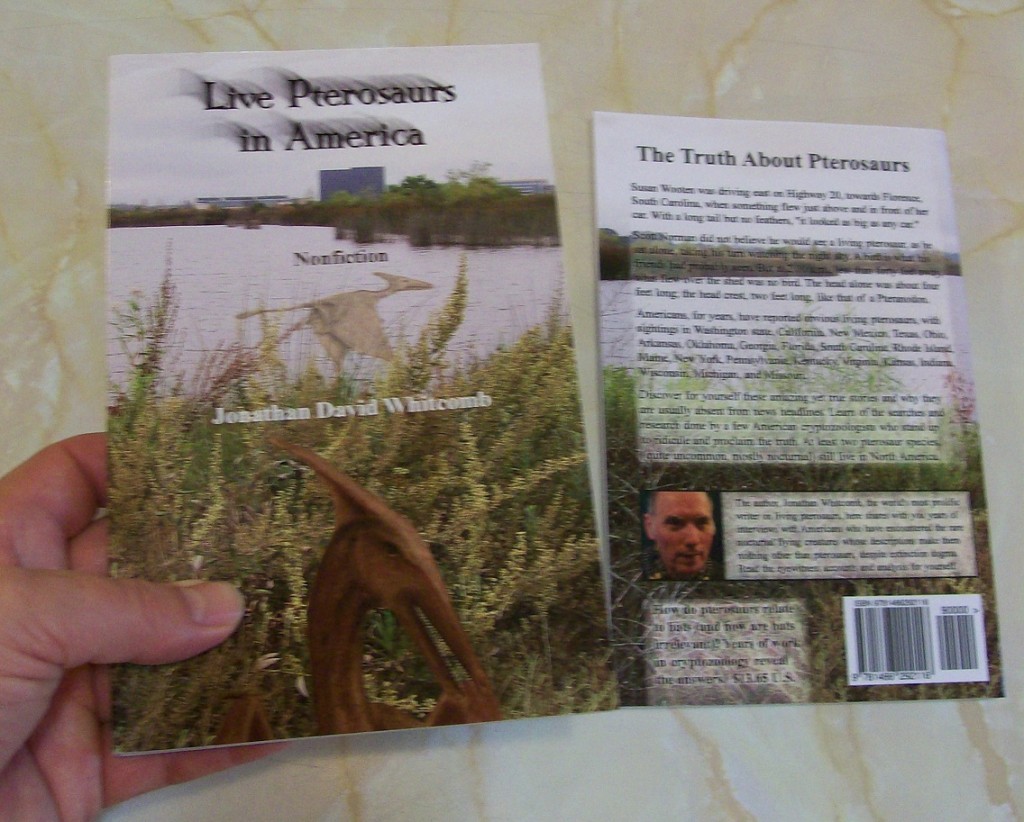When an eyewitness sees a “pterodactyl” flying over a highway in Georgia or taking off from a cliff over a river in Arkansas, why believe the eyewitness? After all, it seems extinction proclamations are everywhere, regarding dinosaurs or “primitive” creatures associated with the dinosaur era. Why not just assume a pterosaur sighting was just a mistake? The descriptions given by American eyewitnesses are too close to those given by eyewitnesses in other parts of the planet, not in the wording or in all the details, but just too close to be from any kind of mistake.
Long tails and lack of feathers are two of the more common descriptions, in eyewitness reports from around the world. And we have just enough other common descriptions* to make it obvious: People from a wide range of countries and continents are observing the same basic kind of flying creature. By far the best explanation is that witnesses are observing real creatures.
* Consider these: Rhamphorhynchoid-like tail flange and head crest (not a common combination in pterosaur fossils but not entirely unknown, either).
Quoting from a Cryptozoology book
From the nonfiction book Live Pterosaurs in Australia and in Papua New Guinea:
I partially agree with the general concept of extinctions, but without committing myself to any time frame. Most species of dinosaurs and pterosaurs appear to have been extinct for some time; nevertheless, after many years of investigations, my associates and I assert that at least two species of pterosaurs live in the southwest Pacific. . . .
The first discovery of a pterosaur fossil by a Western scientist, in 1784, was decades before Charles Darwin began writing about his ideas on extinctions and evolution. Before Darwin, Western scientists had assumed that all species of pterosaurs were extinct for a simple reason: Those who discovered the fossils had no experience with any similar animal that was living. Also important, probably no scientist at that time had considered that a few species of pterosaurs might still be alive, rarely seen because they’re both uncommon and nocturnal. . . .
Darwin emphasized extinctions. In time, the concept of many extinctions in the distant past was accepted by many scientists. That created an atmosphere unfriendly to any eyewitness account of a live pterosaur, to put it mildly. . . .
How hard it is for many Westerners to abandon the idea that all pterosaurs are long extinct! The word “science” has been tied to both men who walk on the moon and to declarations that all dinosaurs and pterosaurs have been extinct for millions of years. How shocking to encounter a cryptozoologist who is cutting down a longstanding tradition about pterosaur extinction!
.
Credibility of Georgia Pterosaur Eyewitnesses
Flying creatures observed in the state of Georgia, according to the reports I have received from eyewitnesses, resemble apparent pterosaurs of other states . . .
Reports of living “pterodactyls” in Georgia, during the past seven years, probably relate to sightings of some flying creatures in South Carolina and Florida . . .
.

Live Pterosaurs in America by Jonathan David Whitcomb (third expanded edition)
On Amazon, a reviewer of the second edition wrote the following (by “stevie” quoted in part):
This is an updated review of the book and I am changing my rating to 5 stars. . . . I remember stumbling on this subject (cryptozoology, living dinosaurs, extinct animals) in recent years. I always find myself fascinated by the subject . . .
I couldn’t get enough and their are so few books on the subject. I highly recommend this. . . . Whitcomb painstakingly reviews every account for credibility and reason. This man is not a crank. . . .
On top of this, I have great respect for a guy who follows his dreams so passionately. He has traveled to Papua New Guinea to search for the creature . . . After Whitcomb traveled to New Guinea, he started to collect more stories from North America concerning the pterosaur like creature . . .
If you are interested in reading about this subject, this is definitely the book to get . . . this author has really done a lot of work researching this issue. . . . I do believe the author tried hard to deliver these stories and was very good at it. This is well written and very hard to put down. [Five stars; “Oddly fascinating”]
.


